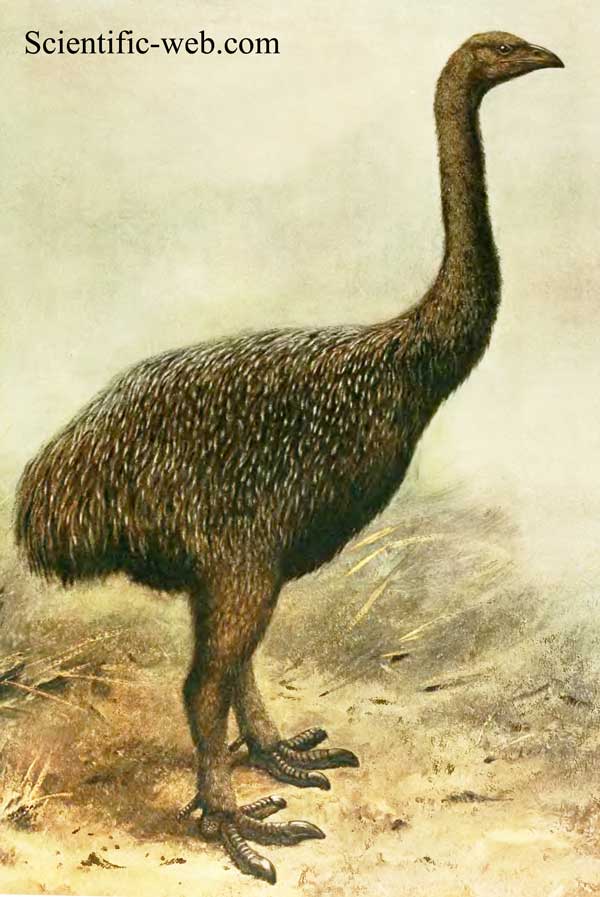Cladus: Eukaryota
Supergroup: Opisthokonta
Regnum: Animalia
Subregnum: Eumetazoa
Cladus: Bilateria
Cladus: Nephrozoa
Cladus: Deuterostomia
Phylum: Chordata
Subphylum: Vertebrata
Infraphylum: Gnathostomata
Superclassis: Tetrapoda
Classis: Aves
Subclassis: Carinatae
Infraclassis: Neornithes
Parvclassis: Paleognathae
Ordo: † Dinornithiformes
Familia: †Emeidae
Subfamilia: †Anomalopteryginae
Genus: †Megalapteryx
Species: †Megalapteryx didinus
Name
†Megalapteryx didinus Owen, 1883
Synonyms
* †Megalapteryx hectori Haast, 1886
* †Megalapteryx benhami Archey [syn. Worthy (1988)]
References
* Worthy, T.H. 1988: A re-examination of the moa genus Megalapteryx. Notornis, 35: 99-108.
Vernacular names
Internationalization
English: Upland Moa,Lesser Megalapteryx
The Lesser Megalapteryx or Upland Moa (Megalapteryx didinus) was a species of ratite bird endemic to New Zealand. Ratites are flightless birds with a sternum without a keel. They also have a distinctive palate.[2] It was the last moa species to become extinct, vanishing around 1500.
Fossils and remains
Preserved Megalapteryx foot, Natural History Museum[3]
Several specimens with soft tissue and feather remains are known:
* British Museum A16, found at Queenstown in 1876, is the type of the species.
* Otago Museum C.68.2A, leg with much muscle tissue, skin and feathers from the Old Man Range
* Museum of New Zealand Te Papa Tongarewa NMNZ S.000400, a skeleton with tissue on neck and head from the Cromwell area.[4]
* Museum of New Zealand Te Papa Tongarewa NMNZ S.023080, a foot with some muscle and sinews, found on 7 January 1987 at Mount Owen. This was dated to be about 3,300–3,400 years old.[5]
* Museum of New Zealand Te Papa Tongarewa NMNZ S.027950, feathers found in 1949 at Takahe Valley, Fiordland, New Zealand.[6]
* Canterbury Museum NZ 1725, Remains of one partial egg which have been found at the Rakaia River in 1971 are tentatively attributed to this species. The radiocarbon date of approximately AD 1300–1400 is in line with this. Unusually, the eggshell is dark olive green, but even if the egg is of M. didinus, the shell color may have varied between individual eggs.[7]
* Museum of New Zealand Te Papa Tongarewa NMNZ S.023700, complete skeleton found by Trevor Worthy in March 1987 at Honeycomb Hill Cave, Oparara Valley[8]
Habitat and range
It has been ascertained that this moa resided on the South Island only and in high-altitude beech forests.[2]

